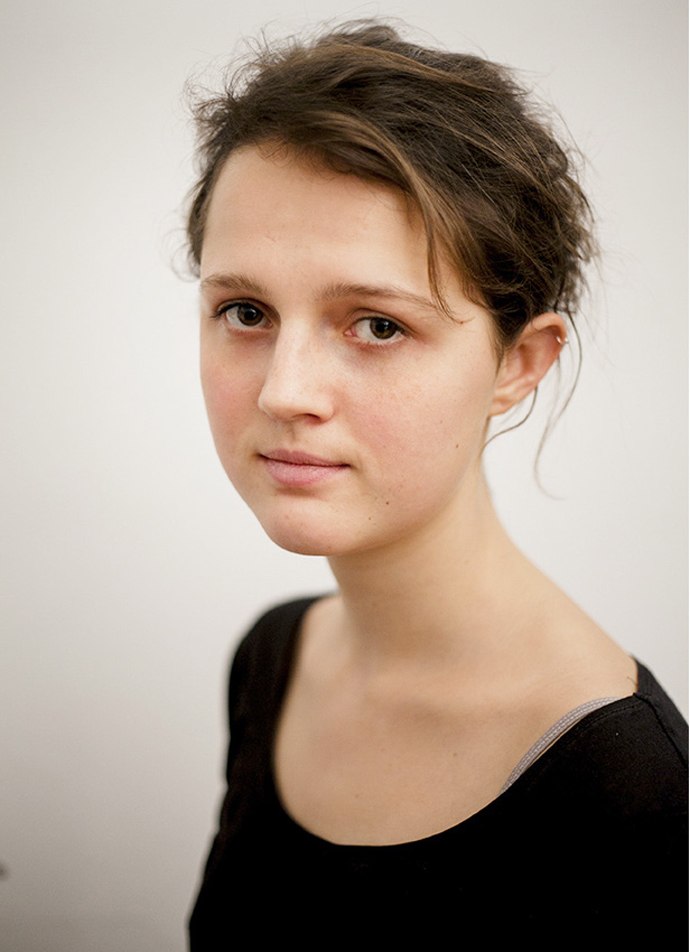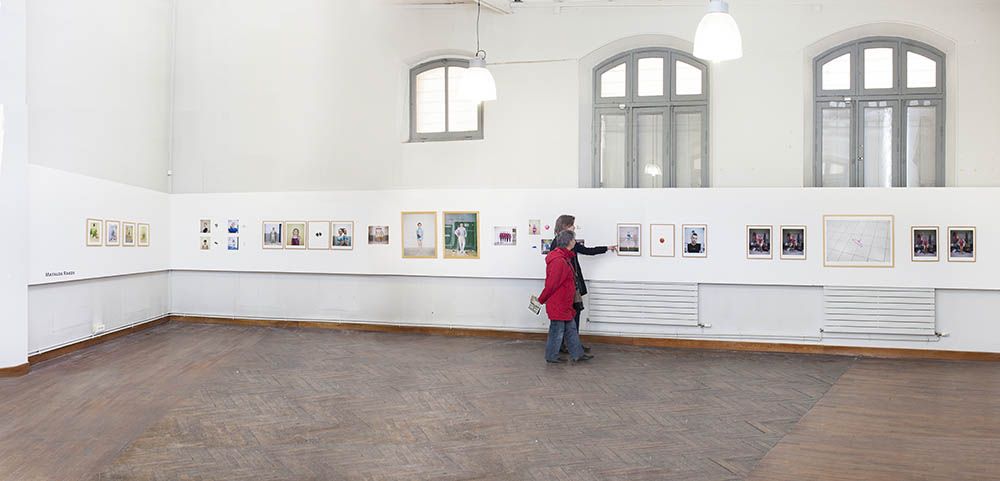Mafalda Rakoš (*1994, AT) is a documentary photographer based between Vienna and Amsterdam. She holds a BA in Anthropology from Vienna University and realized long-term projects in different regions of the world such as the Middle East, India, Central Europe and West Africa.
Her projects often move within the intersection of art, documentary and journalism and attempt to dive deep into protagonist’s stories around safety, pain and trauma. The main platform of her work are books which gained attention in contests such as Unseen Dummy Award, Kassel Dummy Award and the European Publishers Award for Photography; furthermore, it is regularly shown in international exhibitions and other contexts such as congresses for eating disorders (2016), or a hospital (2017). Her work appeared in Die Zeit, Stern, Neon, Zeit Campus, DUMMY, die Presse, FAZ, M le Magazine de Monde, Camera Austria and others.
Can you tell us a little about yourself?
I’m a 20-year old photographer from Vienna, Austria where I work and live. I went to a high school specialized on photography (“die Graphische”), starting aged 14, this is also where I got interested in documentary photography, aged 15 maybe… It was a cool place, we were very free to try things out there. I graduated last year and am now studying anthropology, which I really like, and beginning, with October also photography at the Academy of Fine Arts in Vienna.
How did you get interested in photography?
I remember finding a internet-site that had photographs which appealed to me, when I was in middle school; I looked at them a lot, and slowly started to try some things out. But in general, I’d say that my mum, who also paints and was educated as an art therapist, always did her best to encourage me and my brother to paint, draw, and try stuff out. Doing creative things was very normal and fun to us!
Have any artist/photographer inspired your art?
Certainly. It’s a very general thing to say, but I’m sure that everything you see and experience has an influence on how you see things, and then on your work. The concept of Intertextuality is certainly not very new ;> But of course there is a lot of things I was particularly impressed of. If I’d spontaneously have to come up with names, there’s Robert Frank coming to my mind, Jim Goldberg, Susan Meiselas, Eugene Richards… but certainly also teachers of mine, fellow students, or people I met during workshops. I feel that there’s a lot you can learn from people around you, I really enjoy these encounters.
Could you please tell us anything about your technique and creating process?
Technically, I am currently trying out a lot of stuff, different cameras, different formats… and I’m acutually quite unsure where this is going to end, or if there’s a way this can all go together, but I enjoy doing it, it’s fun. I think a lot of people have or had this. Someone once told me I’m a person who works “out of the mass”, and I think that’s really true .. I don’t mind efforts, or taking a lot of pictures (well, talking about digital), especially when I’m trying new things. Photographing often feels like brainstorming, I try to not limit myself and follow my intuition a lot. Often, I cannot articulate yet what it is that I’m interested in while I photograph, so this steps then comes in the editing process. It often takes time and distance, to figure out what works and what does not.
Describe your ideal photographic situation
I’m not quite sure what this would look like – I often had the feeling that I took the best pictures in situations that were far from “ideal”, on the last roll of film I had with me, or with the last remains of my battery. That’s the nice thing, in reality you cannot really plan stuff, it just comes to you. Improvising is maybe the keyword – so I guess in the ideal situation, I suddenly become aware of something I didn’t see coming beforehand, and am able to react to it. But feeling at ease and connected to whoever it is you’re working with certainly helps, I think it’s a lot about confidence and trusting yourself, and in random incidents.
How much preparation do you put into taking a photography?
I’d say it varies from project to project. As I outlined above I think I’m more the spontaneous kind of picture-taker, I try to put myself into a setting and then stay there until I feel I found what I was looking for. But of course, sometimes you have to get to know someone, tell him or her about your interest, and then somehow try to organize it’s also happening. This is tricky sometimes, and more difficult than just approaching a stranger on the street, smiling and trying to convince him in 3 seconds to have his picture taken. You certainly will get other things out of it.
What’s your useable-to-unusable ratio when you review images from a shoot?
It really depends on the situation, for how long I photographed, and with what. Hard to generalize, but I mostly try to be strict in the selection, and don’t keep the rest.
What quick advice do you have for someone who wants to improve his or her photography skills?
Don’t think about it, don’t expect it to work out all the time and right away. My mum always said “Everyone can draw”, and I think that’s the best attitude to prevent yourself from blocking your ideas because you don’t think it’s “good enough” or something. Everything’s a process, haha.
From time to time many photographers find themselves in a creative rut or uninspired to shoot. Does this ever happen to you and if so how do you overcome these phases?
Hmm. I think it’s like being in a bad mood, the best thing is just to not think about it and go out and do it anyway, distract yourself. But that’s easy to say. I had a phase where I didn’t feel like photographing at all, but then someone gave me a different camera, that saw and worked in an entirely different way, so that was fun and I felt like taking pictures again. Sometimes you have to fool yourself a bit.
What future plans do you have? What projects would you like to accomplish?
Currently, I’m working on a project about body images and eating disorders, I consider the sports project to be a bit of a “test run” for it. This goes hand in hand with my studies in anthropology, I really feel how it influences my approach, and I feel that I’m currently experimenting a lot with the intersection of these two worlds. Beside this, I am doing small assignments for magazines, which I often enjoy, they are fun. I’m curious what the academy will bring, I am often grateful for a little framework or a theme to work on – but in general, I could well imagine working on something related in the future, I feel that there’s a great actuality in application areas like achievement, illness, and self-treatment for the society we’re living in. [Official Website]








